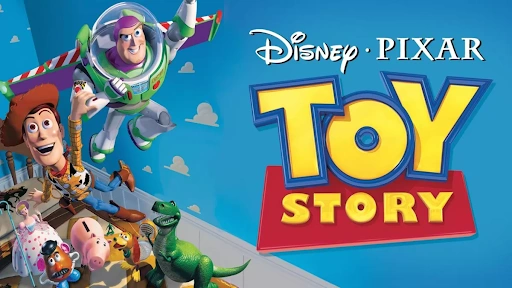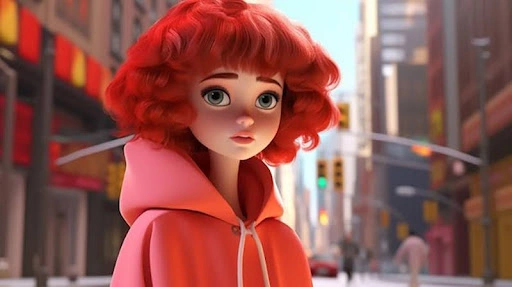3D Animation: Definition, Stages, and Applications Across Various Fields

Definition of 3D Animation
3D animation is a technique for creating moving images with the illusion of depth, height, and width in three-dimensional space.
Unlike 2D animation, which only uses the X and Y axes, 3D animation adds the Z-axis, providing a more realistic and detailed appearance.
With this technology, objects, characters, and environments can be created to closely resemble the real world.
History of 3D Animation Development

3D animation began to emerge in the 1970s when computers were first utilized to create graphics and animations.
A major milestone occurred in 1995 with the release of Toy Story by Pixar Animation Studios.
This film was the first full-length animated movie entirely made using computer technology. Since then, 3D animation techniques and tools have continued to evolve alongside technological advancements.
The development of hardware and software technology has made 3D animation increasingly detailed and realistic.
Improvements in computing power have reduced rendering times and enabled the creation of more complex simulations.
Today, machine learning and artificial intelligence contribute to accelerating the animation process and creating more natural character movements.
Stages of 3D Animation Production
Creating 3D animation involves various complex processes that require a combination of technical skills and creativity. Below are the general steps:
A. Pre-Production
Concept and Idea: Developing the initial idea, story concept, and main plot.
Storyboard: Creating rough sketches for each scene to visualize the story flow.
Character and Environment Design: Drafting the initial designs for characters, objects, and backgrounds.
B. Production
Modeling: Creating 3D models using software such as Blender, Maya, or 3ds Max to serve as the foundation for characters and objects.
Rigging: Adding a skeletal system to the model so it can move.
Texturing and Shading: Applying textures, colors, and details to the model to enhance realism.
Animation: Moving 3D models using techniques like keyframes to achieve the desired motion.
Lighting: Setting up lighting to create the appropriate atmosphere.
Rendering: The final process where all elements such as motion, lighting, and effects are processed into the final video or image.
C. Post-Production
Compositing: Combining 3D animation with visual effects or other elements.
Editing and Audio: Assembling scenes and adding music, voice, and sound effects.
Final Review: Ensuring all animation elements meet quality standards before release.
Each stage involves collaboration among various teams, including animators, graphic designers, producers, and visual effects specialists, to ensure a high-quality result.
3D Animation Software
Below are some commonly used software for 3D animation production:
Autodesk Maya: The leading software in the film and professional animation industry.
Blender: A free and open-source application with comprehensive features for 3D animation.
3ds Max: Ideal for modeling, animation, and rendering in the game and architectural industries.
Cinema 4D: Popular among graphic designers due to its user-friendly interface.
ZBrush: Used for detailed modeling and character sculpting.
Houdini: Highly suitable for creating complex visual effects and physics simulations.
In addition to these software tools, supporting technologies like Unreal Engine and Unity are often used for real-time animation, particularly in video game development and interactive simulations.
Applications of 3D Animation Across Various Fields
3D animation has a wide range of applications across multiple sectors, including:
Film and Entertainment Industry:
3D animation plays a key role in animated films, visual effects (VFX), and television series production. Examples of popular films include Frozen, The Avengers, and the 2019 version of The Lion King.Video Games:
With 3D animation, game developers can create more interactive characters and virtual worlds. Popular examples include Fortnite, The Witcher 3, and GTA V.Architecture and Interior Design:
In architecture, 3D animation is used to visualize building and interior designs before construction begins.Education:
3D animation helps visualize complex materials, such as human anatomy in biology lessons or scientific simulations in physics.Healthcare:
This technology is used to simulate surgeries, visualize human organs, and train medical professionals.Advertising and Marketing:
Companies use 3D animation to create more engaging and informative product advertisements, especially in technology, automotive, and property sectors.Simulation and Training:
3D animation is used in flight simulations, military training, and disaster simulations to train real-world scenarios without actual risks.
Challenges in 3D Animation Production
Despite its many advantages, the 3D animation production process faces several challenges, including:
Cost and Time: 3D animation projects require significant financial resources and long production times, especially for large-scale projects.
Technical Skills: Specialized skills are needed to master animation software and principles.
Complex Technical Processes: Production often involves physical simulations, lighting, and rendering, which require substantial resources.
High Hardware Requirements: High-quality animation production demands hardware with powerful specifications for efficient processing.
The Future of 3D Animation Technology
Advancements in technologies like Virtual Reality (VR), Augmented Reality (AR), and Artificial Intelligence (AI) are expected to push 3D animation to the next level.
These technologies enable more immersive and interactive visual experiences while opening up new opportunities across various industries.
Furthermore, real-time animation technology allows for faster and more efficient production processes, particularly for games and simulations.
In the future, 3D animation will not only be used for entertainment but will also play a vital role in urban planning, disaster simulations, and the development of innovative medical solutions.
Closing
3D animation has revolutionized how we perceive the digital world with its realistic and immersive visuals. This technology continues to evolve thanks to advancements in hardware and software.
For those interested in a career in 3D animation, technical skills, creativity, and software expertise are essential for success in this industry.
With future technological innovations, the opportunities and potential of 3D animation will continue to expand across various fields of life.
Related News
.webp)
Understanding 2D Animation and Its Production Techniques

Immersive Games: Transforming the Future of Interactive Entertainment

Intellectual Property: A Key Asset in the Digital Economy of 2024


